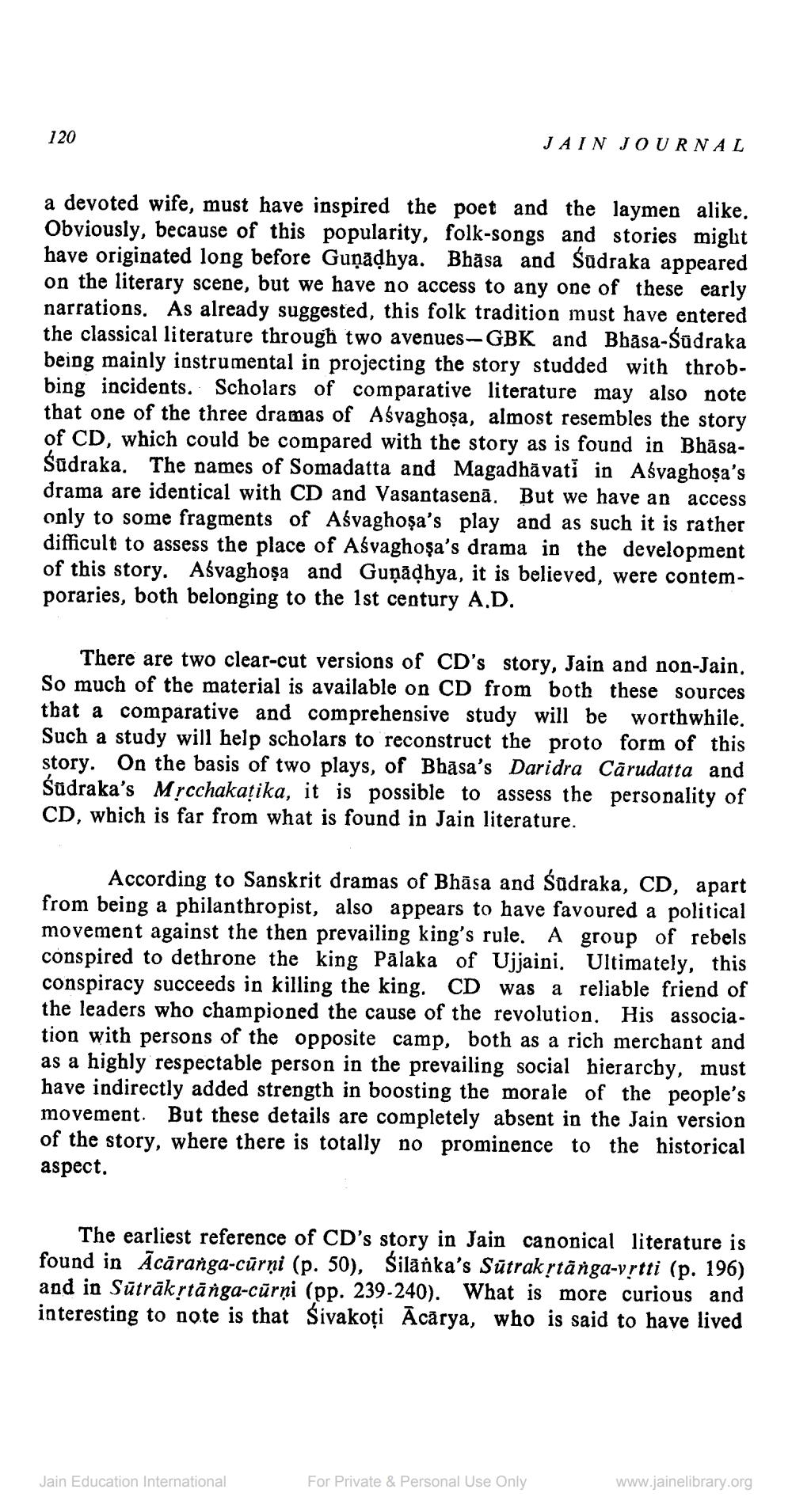________________
120
JAIN JOURNAL
a devoted wife, must have inspired the poet and the laymen alike. Obviously, because of this popularity, folk-songs and stories might have originated long before Guņādhya. Bhāsa and Sūdraka appeared on the literary scene, but we have no access to any one of these early narrations. As already suggested, this folk tradition must have entered the classical literature through two avenues-GBK and Bhasa-Südraka being mainly instrumental in projecting the story studded with throbbing incidents. Scholars of comparative literature may also note that one of the three dramas of Ašvaghoșa, almost resembles the story of CD, which could be compared with the story as is found in BhāsaSadraka. The names of Somadatta and Magadhāvati in Asvaghoşa's drama are identical with CD and Vasantasenā. But we have an access only to some fragments of Ašvaghoşa's play and as such it is rather difficult to assess the place of Asvaghoşa's drama in the development of this story. Ašvaghoşa and Guņādhya, it is believed, were contemporaries, both belonging to the 1st century A.D.
There are two clear-cut versions of CD's story, Jain and non-Jain. So much of the material is available on CD from both these sources that a comparative and comprehensive study will be worthwhile. Such a study will help scholars to reconstruct the proto form of this story. On the basis of two plays, of Bhāsa's Daridra Cārudatta and Śūdraka's Mrcchakațika, it is possible to assess the personality of CD, which is far from what is found in Jain literature.
According to Sanskrit dramas of Bhāsa and Sudraka, CD, apart from being a philanthropist, also appears to have favoured a political movement against the then prevailing king's rule. A group of rebels conspired to dethrone the king Palaka of Ujjaini. Ultimately, this conspiracy succeeds in killing the king. CD was a reliable friend of the leaders who championed the cause of the revolution. His association with persons of the opposite camp, both as a rich merchant and as a highly respectable person in the prevailing social hierarchy, must have indirectly added strength in boosting the morale of the people's movement. But these details are completely absent in the Jain version of the story, where there is totally no prominence to the historical aspect.
The earliest reference of CD's story in Jain canonical literature is found in Ācāranga-cūrņi (p. 50), Silanka's Sūtrak stānga-vrtti (p. 196) and in Sūtrākstānga-cūrņi (pp. 239-240). What is more curious and interesting to note is that Sivakoti Ācārya, who is said to have lived
Jain Education International
For Private & Personal Use Only
www.jainelibrary.org




